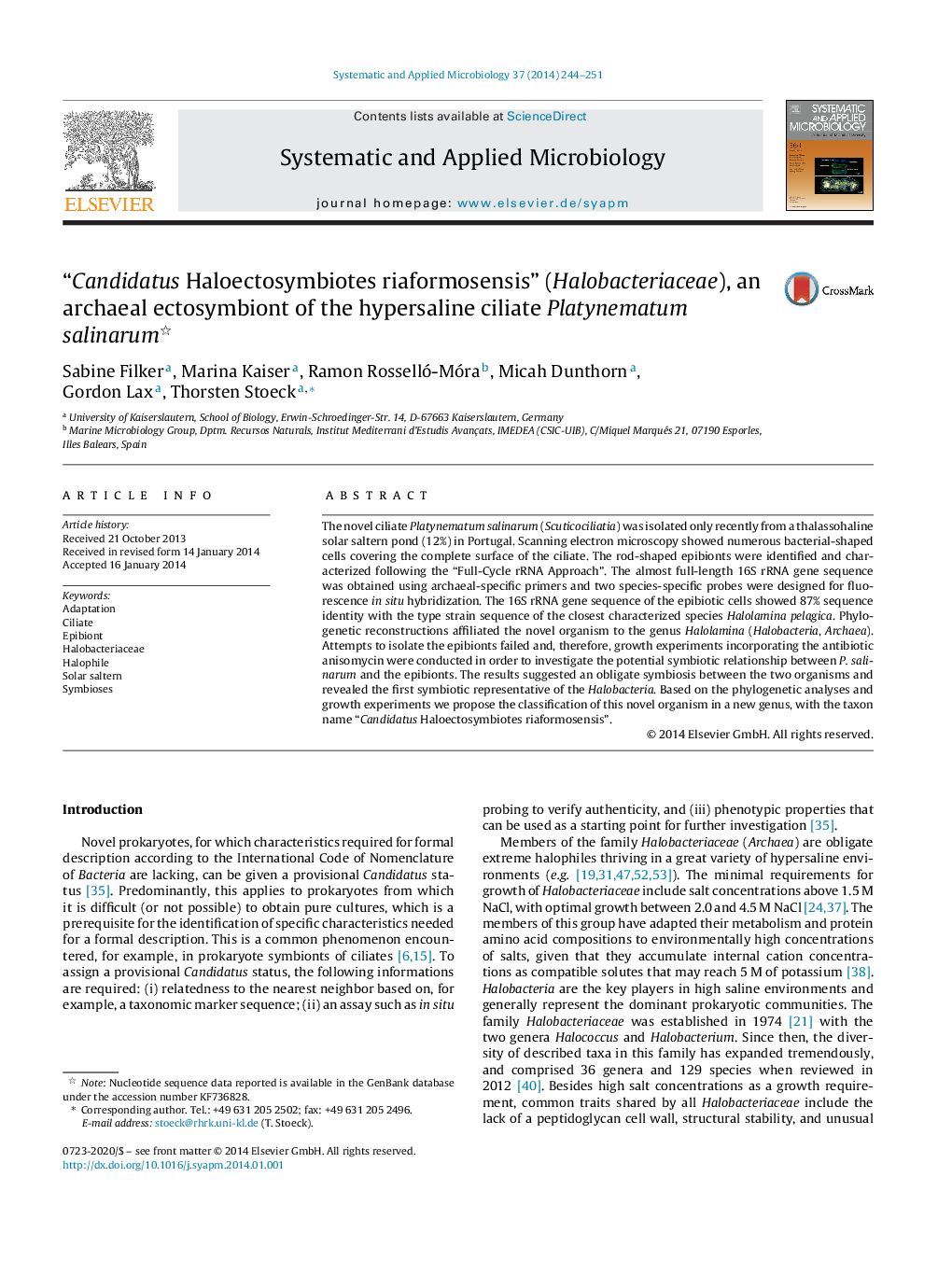| Article ID | Journal | Published Year | Pages | File Type |
|---|---|---|---|---|
| 10879806 | Systematic and Applied Microbiology | 2014 | 8 Pages |
Abstract
The novel ciliate Platynematum salinarum (Scuticociliatia) was isolated only recently from a thalassohaline solar saltern pond (12%) in Portugal. Scanning electron microscopy showed numerous bacterial-shaped cells covering the complete surface of the ciliate. The rod-shaped epibionts were identified and characterized following the “Full-Cycle rRNA Approach”. The almost full-length 16S rRNA gene sequence was obtained using archaeal-specific primers and two species-specific probes were designed for fluorescence in situ hybridization. The 16S rRNA gene sequence of the epibiotic cells showed 87% sequence identity with the type strain sequence of the closest characterized species Halolamina pelagica. Phylogenetic reconstructions affiliated the novel organism to the genus Halolamina (Halobacteria, Archaea). Attempts to isolate the epibionts failed and, therefore, growth experiments incorporating the antibiotic anisomycin were conducted in order to investigate the potential symbiotic relationship between P. salinarum and the epibionts. The results suggested an obligate symbiosis between the two organisms and revealed the first symbiotic representative of the Halobacteria. Based on the phylogenetic analyses and growth experiments we propose the classification of this novel organism in a new genus, with the taxon name “Candidatus Haloectosymbiotes riaformosensis”.
Related Topics
Life Sciences
Agricultural and Biological Sciences
Ecology, Evolution, Behavior and Systematics
Authors
Sabine Filker, Marina Kaiser, Ramon Rosselló-Móra, Micah Dunthorn, Gordon Lax, Thorsten Stoeck,
